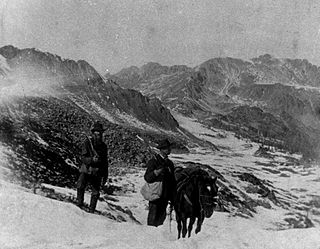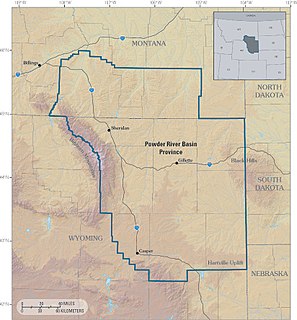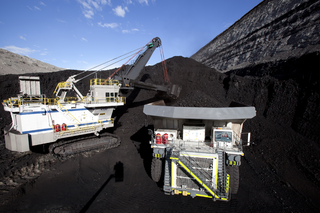Gillette Syndrome is the social disruption that can occur in a community due to rapid population growth. Such disruptions usually include increased crime, degraded mental health, weakened social and community bonds, abnormally high costs of living, and other social problems.
Social disruption is a term used in sociology to describe the alteration, dysfunction or breakdown of social life, often in a community setting. Social disruption implies a radical transformation, in which the old certainties of modern society are falling away and something quite new is emerging. Social disruption might be caused through natural disasters, massive human displacements, rapid economic, technological and demographic change but also due to controversial policy-making.
In biology or human geography, population growth is the increase in the number of individuals in a population. Many of the world's countries, including many in Sub-Saharan Africa, the Middle East, South Asia and South East Asia, have seen a sharp rise in population since the end of the Cold War. The fear is that high population numbers are putting further strain on natural resources, food supplies, fuel supplies, employment, housing, etc. in some of the less fortunate countries. For example, the population of Chad has ultimately grown from 6,279,921 in 1993 to 10,329,208 in 2009, further straining its resources. Vietnam, Mexico, Nigeria, Egypt, Ethiopia, and the DRC are witnessing a similar growth in population.

Mental health is a level of psychological well-being or an absence of mental illness - the state of someone who is "functioning at a satisfactory level of emotional and behavioural adjustment". From the perspectives of positive psychology or of holism, mental health may include an individual's ability to enjoy life, and to create a balance between life activities and efforts to achieve psychological resilience. According to the World Health Organization (WHO), mental health includes "subjective well-being, perceived self-efficacy, autonomy, competence, inter-generational dependence, and self-actualization of one's intellectual and emotional potential, among others." The WHO further states that the well-being of an individual is encompassed in the realization of their abilities, coping with normal stresses of life, productive work and contribution to their community. Cultural differences, subjective assessments, and competing professional theories all affect how one defines "mental health".
Gillette Syndrome is most relevant to boomtowns that are growing rapidly due to nearby natural resource extraction, such as coal mining or natural gas drilling.

A boomtown is a community that undergoes sudden and rapid population and economic growth, or that is started from scratch. The growth is normally attributed to the nearby discovery of a precious resource such as gold, silver, or oil, although the term can also be applied to communities growing very rapidly for different reasons, such as a proximity to a major metropolitan area, huge construction project, or attractive climate.

Coal mining is the process of extracting coal from the ground. Coal is valued for its energy content, and, since the 1880s, has been widely used to generate electricity. Steel and cement industries use coal as a fuel for extraction of iron from iron ore and for cement production. In the United Kingdom and South Africa, a coal mine and its structures are a colliery, a coal mine a pit, and the above-ground structures the pit head. In Australia, "colliery" generally refers to an underground coal mine. In the United States, "colliery" has been used to describe a coal mine operation but nowadays the word is not commonly used.

Natural gas is a naturally occurring hydrocarbon gas mixture consisting primarily of methane, but commonly including varying amounts of other higher alkanes, and sometimes a small percentage of carbon dioxide, nitrogen, hydrogen sulfide, or helium. It is formed when layers of decomposing plant and animal matter are exposed to intense heat and pressure under the surface of the Earth over millions of years. The energy that the plants originally obtained from the sun is stored in the form of chemical bonds in the gas.
Psychologist ElDean Kohrs coined the term "Gillette Syndrome" in an attempt to describe the social impacts of rapid coal mining development on the boomtown of Gillette, Wyoming. [1]

A psychologist studies normal and abnormal mental states, cognitive, emotional, and social processes and behavior by observing, interpreting, and recording how individuals relate to one another and to their environments. To become a psychologist, a person often completes a graduate university degree in psychology, but in most jurisdictions, members of other behavioral professions can also evaluate, diagnose, treat, and study mental processes.

Gillette is a city in and the county seat of Campbell County, Wyoming, United States. The population was estimated at 30,560 as of July 1, 2017. Gillette is centrally located in an area involved with the development of vast quantities of American coal, oil, and coalbed methane gas. The city calls itself the "Energy Capital of the Nation," noting that the state of Wyoming provides nearly 35% of the nation's coal. Over the last decade Gillette saw a population increase of 48% from the 2000 census of 19,646 residents.












